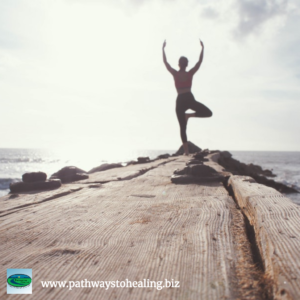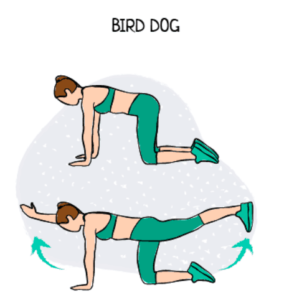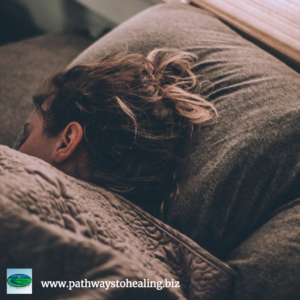Got back pain? Pay attention to this muscle
By: Dr. Alyssa Musgrove
If you, or someone you know, is always searching for back pain relief, it may be time to examine the psoas muscle. I work on the psoas (pronounced SO-as) muscle every day with my patients. Many people have not heard of this muscle, yet it is a major player when it comes to back pain, especially when there is difficulty straightening up from a seated position.
The psoas is a rope-like muscle that attaches to all the low back bones (lumbar vertebra), runs down across the groin and attaches to the inside of the hip. The psoas is joined at the hip, literally, by the iliacus, which travels from hip to thigh. Together, the psoas and iliacus make up the iliopsoas – the body’s most powerful hip flexor. The psoas helps promote good posture and stabilizes your abdomen and pelvis as it works together with your abs, obliques and lower back muscles. Every time you stand, walk, or run, or play golf, you’re engaging the psoas.
When the psoas is weak or tight, it can cause symptoms such as pain across the lower back, groin pain, hip pain, pain in the buttocks, difficulty walking up stairs or hills, tight hamstrings, knee pain and even foot pain.
John Stiner, a massage therapist based in Durham, N.C., whose credentials include a 2008 stint with the Nike Oregon Project, has noticed an epidemic of psoas tightness among his running clients. The number one culprit, he says, is your chair. Sitting for long periods puts the psoas in a perpetually shortened state. The muscle has memory and will maintain this shortened state, even when you get up from your chair. “Our bodies simply aren’t designed to sit all day,” says Stiner.
Another cause of imbalanced psoas muscles are abdominal crunches. Performing too many sit-ups causes the psoas muscle to shorten, which can lead to an increased arch in the lower back and a head-forward posture. While this posture is normally seen in the elderly population, nowadays, we are seeing this type of posture in younger people. Rather than just focusing on abdominal exercises, it is better to have a more balanced program that works the core muscles in the back, as well as the front of the body. Sleeping in the fetal position also causes prolonged periods of stress on your psoas muscle.
You can perform a simple test to determine if you have a tight psoas. Lie on your back with both legs straight. Pull one knee towards your chest. If the other leg lifts off the floor, then your psoas is too tight. Now try the other side.
Regular gentle stretching is the best antidote for a tight psoas. Keep in mind that it will take time to release the psoas. The muscle has to be retrained, and you have to be consistent with the stretching. Be careful not to overstretch, which can cause the muscle to contract and shorten. Start your stretch slowly and ease into it without straining. You want to feel a lengthening sensation of the muscle.
Here are two simple psoas stretches you can try at home:
KNEELING LUNGE
Kneel on one knee, with the front leg forward at a 90-degree angle. With your pelvis tucked, lunge forward, easing into the stretch without straining. If your psoas is tight, your natural tendency may be to arch your lower back; make it a point to keep the back straight. Raise your arms overhead for an added abdomen stretch. To dynamically stretch the psoas, complete 20 reps on each side, holding the lunge for 2 to 3 seconds.
WARRIOR YOGA POSE
Step one foot 3 to 4 feet in front of you. Lunge forward until your front knee is at a right angle. (Readjust your foot position if necessary.) Turn your back foot out about 45 degrees. Keeping your back foot firmly planted, and your head, shoulders, hips and knees facing forward, raise your arms overhead. Relax your shoulders; don’t let them inch up. Lift your rib cage away from your pelvis to really stretch the psoas. As in all yoga poses, breathe deeply and easily. Don’t strain. Hold for 30 to 60 seconds.
Other tips to keep your psoas in top shape include:
1. Sitting less — Try to get up every 45 minutes, at least. If you are traveling long distances, stop every 3 hours and stretch or walk for 5-10 minutes.
2. Reach for support — Add support to your car seat by using a rolled up towel or small pillow behind your lower lumbar spine.
3. Professional massage — Massage can help relieve a tight psoas, although this type of massage is not always comfortable.
By consistently working to relax the psoas and gradually restore its length, you will help reduce lower back pain, hip pain, groin pain, buttock pain and tight hamstrings, as well as prevent future injury.
Pathways to Healing specializes in holistic chiropractic care. Dr. Alyssa Musgrove draws on a variety of techniques, including chiropractic, kinesiology, nutrition, food allergy testing and lifestyle counseling to assist clients in achieving optimal health and wellness in one setting. Pathways to Healing is located at 1022 Founders Row, Lake Oconee Village, Greensboro. The office can be reached at 706-454-2040.






